
Food is an integral
part of Bengali culture. Be it a festival, puja or a wedding, cuisine plays a
major role in the celebrations. Bengali cooking has mostly been nurtured in
households and families and the dishes are carefully prepared as per recipes
handed down through the generations. The course of taste-flow of a Bengali meal
starts from a bitter to a sweet finish. Bengali food is widely cooked in mustard oil as it the medium of cooking.
This gives a distinct flavor to the dishes making them taste quintessentially
Bengali. The food mainly comprises of fresh water fish and a vast range of rice
dishes. Bengali cuisine is rich in its use of subtle spices and flavors
and what predominantly assists it to stand out is this selective use of spices. The seasoning for
each preparation is unique. Bengali style of cooking is simpler than as
perceived by most people. The only element that I would suggest anyone who
wishes to cook Bengali food to keep in mind is stick to the roots or the
basics. Do not experiment much; your grandma’s way of preparing is the best way
to bring out the most authentic flavor.
The
following are a list of the typical minimalist approaches of Bengali style
cooking:
1. Bhaja: This is the one
thing that makes all Bongs go weak in the knees. Deep fried veggies or
even non-veg items like
deep fried fish fall under this category. At the most one can use a thin
water-based batter to fry during cooking as a coating but crumb-coated items
usually are not considered. The best example of a vegetable cooked in this
method is the legendary Begun Bhaja or brinjal fry.

2. Bhapa: Bhapa or steamed dishes are vegetables or non-veg items (especially, varieties of fish and shrimps) marinated with choices of freshly ground spices and delicately steamed. Perhaps macher paturi might have been created when an experiment that our seniors would have carried out became a legendary dish. The most popular spice that is added to this style of cooking is mustard, which forms the
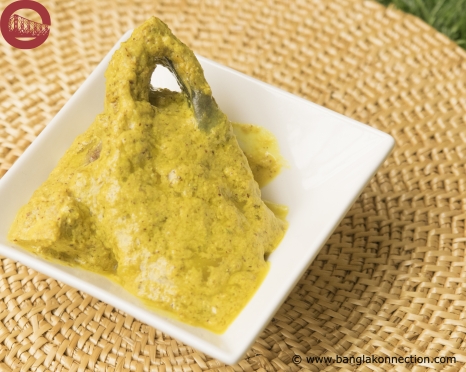
3. Bhate: Probably the healthiest possible version of Bengali food. For bhate, choices of vegetables together or even separately are boiled, smashed and added with a hint mustard oil, salt to taste and reasonable amount of chopped onions and green chillies. Aloo bhate the commonest of the all the dishes is made several times by putting potato inside the rice pot and cooked together. Here I can’t resist myself but share with you how my grandma used to make it. Once the potato is boiled, mash it with mustard oil that is tempered with slits of red chillies and garlic. While serving serve this with a generous amount of crushed fried bori.

4. Chhenchki: Apart from being an easy-to-cook and good-to-eat recipe, Chhenchki helps in cleaning your vegetable rack too. It is usually done with dices of any single vegetable, but mixed combinations can also be used. Chhenchki is a recipe that welcomes even the peels of the vegetables with open arms. Potatoes, squash, pumpkin, gourd, bitter gourd or potol are just a few vegetables that can be used to make it. The most common seasoning used for this style is kalo jeera, however, even use of paanch-phoron or whole mustard seeds is also not restricted in certain combinations.

5. Chorchori: Longish strips of veggie combinations delicately flavoured with mustard and/or posto; this style is a bong delight. Use of leafy vegetables and vegetable stalks (danta) adds to the uniqueness of this style. Potato, pumpkin, radish, eggplant are some most common vegetables used in this recipe. A non-veg version of chorchori using fish bones or shrimps is also a popular Bengali dish. Yes, you guessed it right. It’s Chanchra.
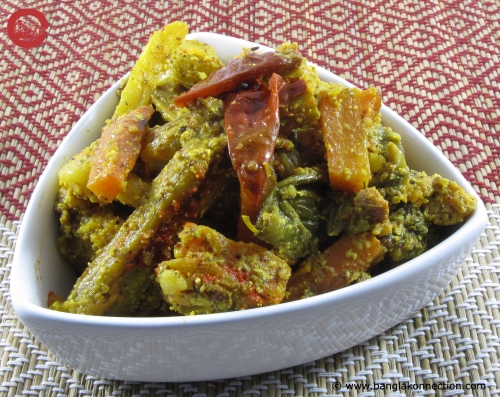
6. Dalna: It is thick spicy red gravy with diligent use of ground spices with garam masala and a generous dash of ghee as a special touch. Dhoka (fried lentil cakes), other mixed vegetable combinations and eggs justify this style the most. Try duck’s egg for your dalna recipe this winter with a combination of luchi. (I can even let go of my stock of 100 rupee notes for this combination – humour intended)

7. Dom: It’s a Bengali version of the Mughlai Dum. This style can be conveniently used for both vegetarian and non-vegetarian recipes. Potato and pointed gourd (potol) are most frequently used for the vegetarian version, whereas meat undoubtedly dominates the non-vegetarian options.

8. Ghonto: Combinations of complementary vegetables like – potatoes, cabbage, green peas, banana blossom, chickpeas and coconut – all finely chopped or grated (as suitable for the vegetables used) forms the spine of this style of cooking. This vastly popular Bengali dish tastes even better with the addition of dried pellets of lentils or fried lentil dumplings (bori).
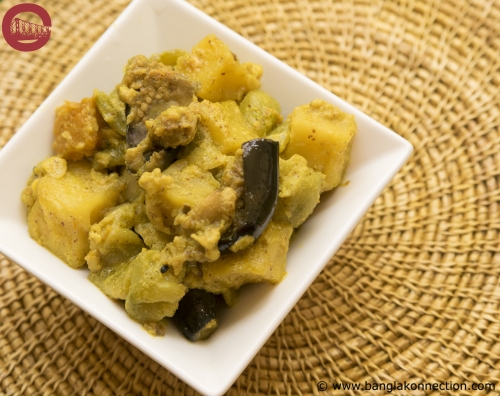
9. Jhal: Whether we consider it literally or by its taste, this favourite Bong recipe means the same – spicy. It is essentially a style of cooking non-vegetarian dishes. Fish, shrimp, crab or even egg needs to be lightly fried and then cooked in bright paste of grounded mustard. Kalo jeera and slits of green chillies in mustard oil is most commonly used for tempering.
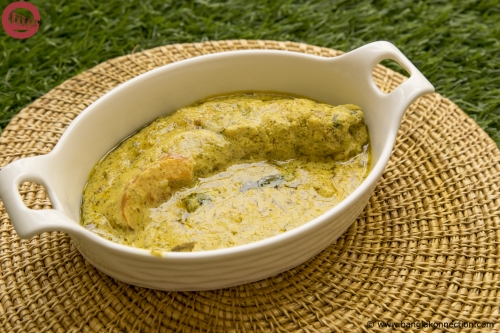
10. Pora: Pora literally translates to burnt and this mouth-watering dish is made with choices of vegetables either wrapped in leaves (most commonly used is banana leaf) or roasted directly over a wood, charcoal fire or even over gas burner (in present days). Once properly roasted the vegetables are de-skinned and mashed with choice of ingredients of which mustard oil and green chillies are the must. Eggplants are the commonest of the all, used for this style.
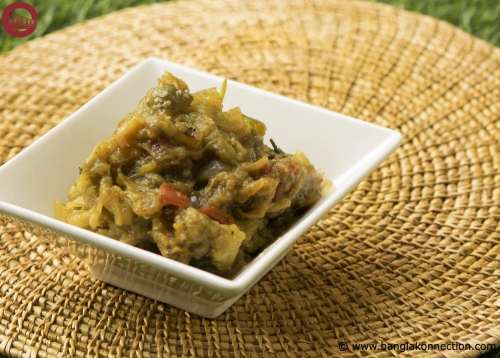

13 Comment(s)
1
1
1
1
1
1
1
1
1
1
1
1
1
1
1
1
1
1
1
1
1
1
1
1
1
1
1
1
1
1
1
1
1
1
1
1
1
1
1
1
1
1
1
1
1
1
1
1
1
1
1
1
1
1
1
1
1
1
1
1
1
1
1
1
1
1
1
1
1
1
1
1
1
1
1
1
1
1
Your blog post on the 10 Styles of Bengali Cooking is a true culinary treasure! The way you intricately describe each cooking style and its unique characteristics showcases your deep knowledge and appreciation for Bengali cuisine. It's evident that your passion for food shines through in your writing, making it a delightful and informative read for anyone interested in exploring the diverse flavors of Bengali cooking. Thank you for sharing such valuable insights!
Leave a Comment